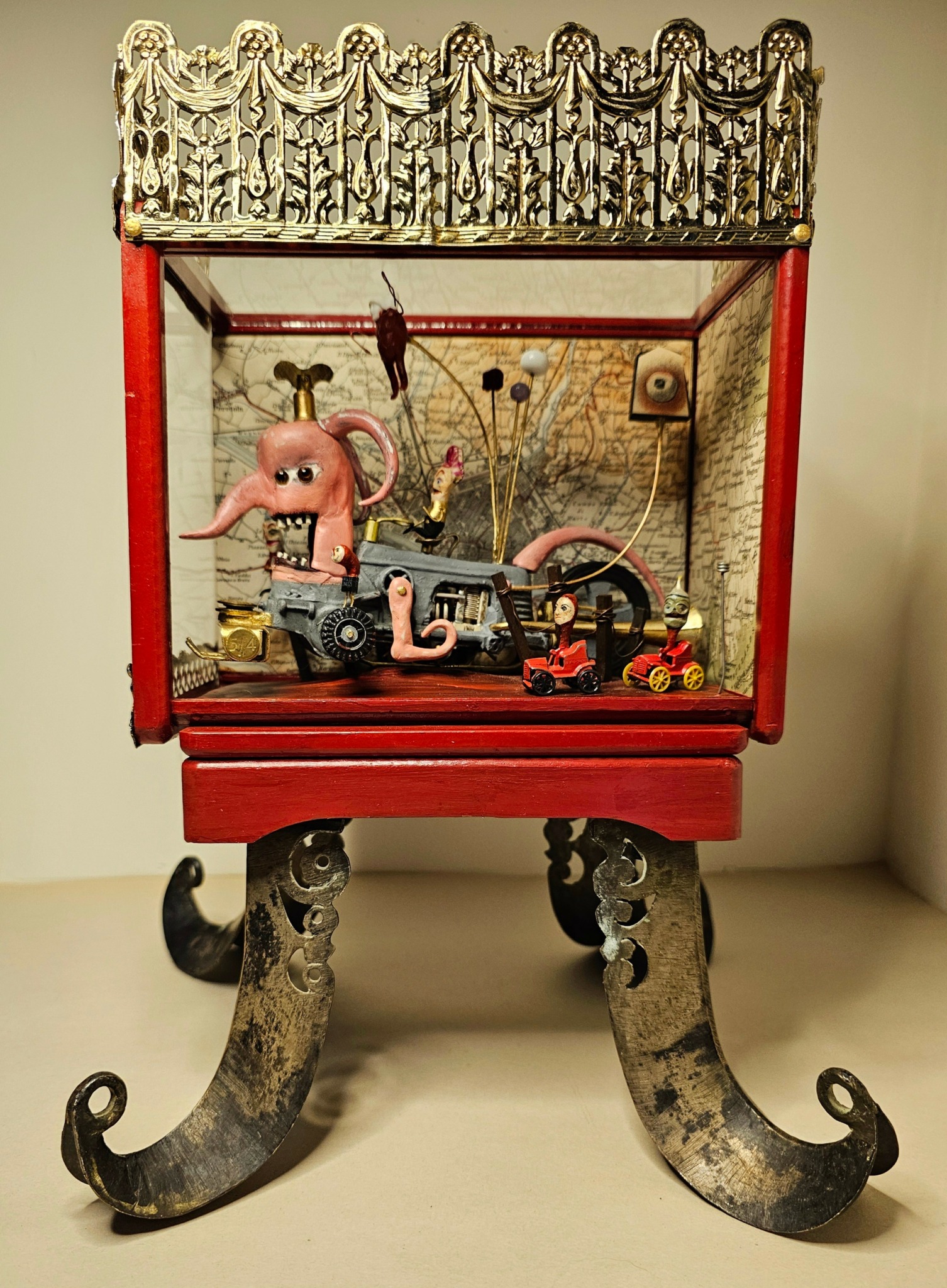We caught up with the brilliant and insightful Jenifer Renzel a few weeks ago and have shared our conversation below.
Hi Jenifer, thanks for joining us today. We’d love to hear the backstory behind a risk you’ve taken – whether big or small, walk us through what it was like and how it ultimately turned out.
Every time I work on a painting I ask myself to take risks. With my sort of crazy style, I’m flying without a plan and must rely on spontaniety and intuition. Sometimes I find myself losing inspiration and just staring at a piece, or becoming frozen because a piece is almost done and I’m afraid of ruining it.
I’ve come up with techiniques for overcoming these blocks. One thing I do is put at least three painting in motion at the same time. When I get stuck, I work on a different piece for awhile. If I’ve rotated through the working pieces many times in a session and nothing is happening anymore, it’s time to quit.
Another thing I do is take a picture of the current state of the piece and just save it. If I mess things up or go in a completely different direction later, I still have the digital image of the original piece that I can play with in Photoshop. I really have fun making digital collages with my various creatures.
Finally, I might use the digital image as a testing ground. Most phones have photo editing tools that let you change the image. Maybe I’ll white out something or draw something over parts of the photo. I’ve had some good luck using this technique to audition a change before making it in real life.


Jenifer, love having you share your insights with us. Before we ask you more questions, maybe you can take a moment to introduce yourself to our readers who might have missed our earlier conversations?
I worked in high tech until I was able to retire and work on art full time. Now I couldn’t be happier. I started my art career with assemblage about 15 years ago. I transitioned largely to painting about 8 years ago. I still delve into assembage and enjoy making miniatures, especially at the holidays. Painting, drawing, and collage are my true loves now though.
I’m a 59 year old child. By this I mean that I use my art as play. It’s a vehicle for creating strange worlds, unlikely creatures, complex theatrical scenes, and dreamscapes. I’m inspired by vintage science fiction and horror films, antique, slightly disturbing toys, and moving pictures that play in my head before I fall asleep. My work is like a visual stream of consciousness and usually evolves without a plan. I thrive on complexity, unexpected contrasts, and odd details.


How did you build your audience on social media?
I build my audience by consistently posting what I consider to be my best work. I also picked up a chunk of followers when one of my entries for an October drawing challenge (not Inktober but Mabsdrawloweenclub) went a little viral. So, I think some of it is just luck. I’m still a long way away from having the size of audience that I would like. Like everything in the art world, it’s subjective and hard to comprehend why things happen the way they do.
Another thing I try to do is take advantage of opportunities. This means saying yes to solo shows, group shows, art contests, magazine interviews, or whatever reasonable ‘ask’ comes my way.


What’s a lesson you had to unlearn and what’s the backstory?
This is sort of funny and I bet it has happened to others. As I mentioned, I didn’t go to art school and learned a fair amount about my craft by watching clips of other artists at work on YouTube, Instagram, and so forth. Most of these clips are speeded up so they can show the evoluation of a finished piece in a small time slot. Consciouly I knew these were unrealistically fast, but on some level I internalized that a super fast, free style was the way to go. I had to pry this hidden idea out of the back of my head and learn to be patient, slow down, and ‘be with’ the painting. Working in an art journal while flying was really helpful for this. The constraints of being stuck there, in that chair, for hours, helped me understand the importance of focus and patience. All the details are important, not just the main characters.
Contact Info:
- Website: https://www.jjrenzel.com/
- Instagram: https://www.instagram.com/jenifer_renzel/
- Facebook: https://www.facebook.com/Jenifer.J.Renzel.Assemblage.Art/


Image Credits
Myself


